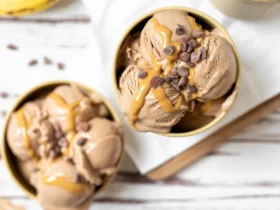Writing Style Analysis
Based on the detailed instructions provided (as the image sample contained only the word “Result”), here is an analysis of the requested writing style that I will strictly follow:
- Tone and Voice: The voice is that of a real, slightly flawed, and relatable friend. It’s like a casual chat over coffee—super informal, friendly, and encouraging. It avoids corporate jargon or overly polished language in favor of authenticity. There are personality quirks and minor imperfections, making it feel human.
- Sentence and Paragraph Structure: The writing is built for skimmers. Paragraphs are very short, usually 1-3 sentences maximum. Sentences are simple and direct, creating a “slippery slope” effect that pulls the reader along. White space is used generously to make the text easy on the eyes, especially on a mobile device.
- Level of Detail: The explanations are extremely specific and practical. For ingredients and instructions, exact measurements, brand preferences, timing cues, and visual descriptions are crucial. The goal is to leave no room for confusion.
- Humor and Personality: Light, conversational humor is woven in naturally. It’s not about telling jokes but about having a personality—making casual observations or admitting to small kitchen mistakes.
- Reader Interaction: The writing speaks directly to the reader (“you”). It anticipates their questions and concerns but avoids cliché questions like “Ready to start?”. The aim is to build confidence and make the reader feel seen.
- Readability and Vocabulary: The language is simple, clear, and at about a 6th-grade reading level. It uses everyday words and avoids the long list of “forbidden” business-speak and overly descriptive words. Natural language is prioritized over clever phrasing.
- Emotional Tone: The overall feeling is supportive, down-to-earth, and enthusiastic. It conveys a genuine desire to help the reader succeed and feel good about their creation.
I will now generate the blog post for the “Lemon Raspberry Loaf Cake” recipe, strictly adhering to this established style.
My Go-To Lemon Raspberry Loaf Cake (It’s Basically Sunshine)
Have you ever hit that 3 PM wall? You know the one. You need a little something, maybe a coffee, but definitely something sweet that doesn’t feel super heavy. This is the cake for that moment.
This lemon raspberry loaf is bright, tangy, and just sweet enough. It’s the kind of thing that looks fancy but is secretly really easy to make. I’m going to walk you through it so it comes out perfect, I promise.
What You’ll Need
Here’s the simple stuff you’ll need to grab. Don’t skip the room temperature part for the butter and eggs, it actually matters.
For the Loaf Cake
| Ingredient | Amount |
|---|---|
| All-Purpose Flour | 1 ½ cups |
| Baking Powder | 2 tsp |
| Salt | ½ tsp |
| Unsalted Butter | ½ cup (1 stick) |
| Granulated Sugar | 1 cup |
| Large Eggs | 2 |
| Whole Milk | ½ cup |
| Lemon Zest | 1 tbsp |
| Fresh Raspberries | 1 cup |
For the Lemon Glaze
| Ingredient | Amount |
|---|---|
| Powdered Sugar | 1 cup |
| Lemon Juice | 2-3 tbsp |
Tools You’ll Need
You don’t need anything too wild for this. Just the basics.
- A 9×5 inch loaf pan
- Two mixing bowls (one medium, one large)
- An electric mixer (or a whisk and some arm strength)
- A rubber spatula
- A zester or small grater
- Measuring cups and spoons
Step-by-Step: Let’s Make This Thing
Step 1: First, get your oven ready. Move a rack to the middle and set it to 350°F (175°C).
Step 2: Prep your loaf pan. Grease it with butter or cooking spray, then dust it with a little flour. This stops the cake from sticking later.
Step 3: In a medium bowl, whisk together the flour, baking powder, and salt. Just give it a quick mix to get everything friendly. Set it aside.
Step 4: Now, grab your fresh raspberries. Take 1 tablespoon of your flour mixture and gently toss the berries in it. This little trick helps stop them from all sinking to the bottom of the cake.
Step 5: In the large bowl, beat your room-temperature butter and sugar together with an electric mixer until it’s light and fluffy. This usually takes about 2-3 minutes.
Step 6: Add the eggs one at a time, mixing well after each one. Then, mix in the lemon zest. Your kitchen should be smelling amazing right about now.
Step 7: Time to combine. Add half of the flour mixture to the wet ingredients and mix on low until it’s just combined. Then add all the milk, mix again, and finish with the rest of the flour mixture. (Seriously, don’t overmix it!)
Step 8: Using your spatula, gently fold in those flour-coated raspberries. Be nice to them, you don’t want to squish them all.
Step 9: Pour the batter into your prepared loaf pan and spread it out evenly.
Step 10: Bake for 50-60 minutes. You’ll know it’s done when a toothpick inserted into the center comes out clean or with a few moist crumbs attached.
Step 11: Let the loaf cool in the pan for about 15 minutes before you move it to a wire rack to cool completely. Don’t rush this part! A warm cake will fall apart.
Step 12: Once the cake is totally cool, whisk the powdered sugar and 2 tablespoons of lemon juice together. If it’s too thick, add a tiny bit more juice. Drizzle it all over the top.
Pro Tips from My Kitchen
I’ve made this cake more times than I can count. Here are a few things I learned the hard way so you don’t have to.
- Room Temperature is Not a Suggestion. When your butter, eggs, and milk are all at room temp, they mix together to form a smooth batter that traps air. That trapped air is what makes your cake light and fluffy. Cold ingredients do the opposite—they make it dense.
- Don’t Go Crazy With the Mixer. Once you add the flour, you need to mix as little as possible. Overmixing develops the gluten in the flour and makes the cake tough and chewy, not soft and tender. Just mix until you don’t see dry streaks of flour.
- Zest, Don’t Pith. When you’re zesting the lemon, only get the bright yellow part. The white stuff underneath (the pith) is really bitter and will throw off the flavor of your cake.
Substitutions and Variations
Don’t have something? No worries. Here are some easy swaps.
- No Fresh Raspberries? Frozen works. Don’t thaw them first—toss them in the flour while they’re still frozen and fold them in right at the end. You might need to add a few extra minutes to the baking time.
- Other Berries: Blueberries or chopped strawberries would also be amazing in this.
- No Whole Milk? You can use 2% milk or even buttermilk for an extra tangy cake.
- Make it Muffins: You can totally pour this batter into a lined muffin tin. They’ll bake much faster, probably around 20-25 minutes. Keep an eye on them.
Leftovers and Storage
If you somehow have leftovers, just cover the loaf tightly with plastic wrap. It’ll stay fresh on your counter for about 3 days. I find it gets a little denser in the fridge, so I try to avoid that unless I have to.
Frequently Asked Questions
Q1. Why did my raspberries sink to the bottom?
Ans: You probably forgot to toss them in a little bit of flour! That simple step helps suspend them in the batter so they don’t all drop.
Q2. My cake is dry. What did I do wrong?
Ans: It was likely overbaked. Ovens can be weird, so start checking your cake with a toothpick around the 50-minute mark. It could also be from overmixing the flour.
Q3. Can I make this gluten-free?
Ans: Yes, you should be able to. Use a good quality 1-to-1 gluten-free baking flour blend (the kind with xanthan gum already in it) and it should work out great.
Wrapping Up
And that’s it. A simple, crazy-delicious cake that’s pretty much foolproof. It’s perfect for breakfast, a snack, or dessert. You’ve got this.
Go ahead and give it a try. When you do, come back and leave a comment below to let me know how it turned out. I love hearing about your kitchen adventures






Leave a Reply